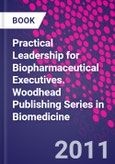Table of Contents
Dedication
Acknowledgements
List of abbreviations
Author's note
About the author
Chapter 1: 'Leadership' as a phenomenon
Abstract
Introduction
Qualitative research methodology
Data analysis
Conclusion
Objectives of this book
Chapter 2: Seven managerial leadership competencies
Abstract
Leadership competence versus capacity
Competence in role: competence for tasks required of the leadership role
Autonomy-cohesion: competence in imparting autonomy and creating cohesion
Trust: competence in creating trust and working from trust
Steadiness amid uncertainty: competence for effectiveness amid incomplete/imperfect facts and/or tension
Balanced execution: competence for balanced execution in the face of increased complexity of role
Communication: competence for expressing clearly, to the scale appropriate to the audience, and with the intended result
Growth/cultivation: competence for developing current and future capability in self and others
Conclusion
Chapter 3: Three commitments of pharmaceutical executives: presence
Abstract
Introduction
The purpose of maintaining presence
Motivating and energizing employees
Energized teams brim with ideas
How team creativity is compromised
A biopharmaceutical executive's communication awareness
Case illustrations of managerial communication failure
Debriefing the case illustrations
Conclusion
Chapter summary
Chapter 4: Three commitments of pharmaceutical executives: stewardship
Abstract
Introduction
Authority to give people jobs (assign them tasks)
Case illustrations of poor stewardship of managerial authority
Debriefing the case illustrations
Authority to give people objectives (assign a direction)
Authority to serve industry and company
Conclusion
Chapter summary
Chapter 5: Three commitments of pharmaceutical executives: development
Abstract
Introduction
Prerequisites in personnel development
How an executive uses the 'stretch' approach in development
Consistency of process in development
Individual contributor to first-line manager: key development challenges
Capabilities today, capabilities tomorrow
Spotlight on field medical science: a case of developing employees in a novel role
The biopharmaceutical executive's own leadership development
Knowing that one does not know: blindspots
Conclusion
Chapter summary
Chapter 6: Self-concept as 'leader'
Abstract
Introduction
Origin of leadership self-concept
Leadership self-concept in executives' managerial awareness
Role of structure in managerial leadership
Conclusion
Chapter 7: Conclusion: a new model of biopharmaceutical executive leadership
Appendices
Appendix 1: Executive demographics
Appendix 2: Aggregate descriptions of subjective experiences of leadership
Appendix 3: Sample interviewee descriptions for 'presence'
Appendix 4: Sample interviewee descriptions for 'stewardship'
Appendix 5: Sample interviewee descriptions for 'development'
References and further reading
Index








